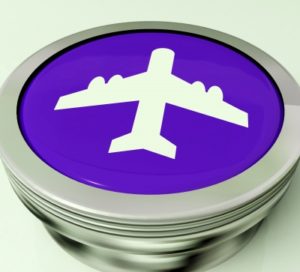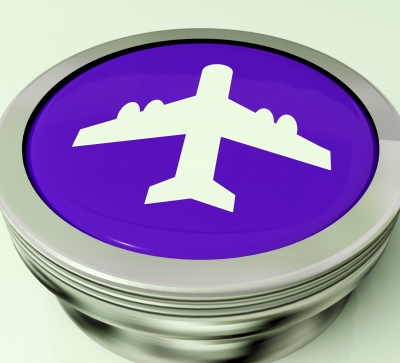 Local business groups and foreign chambers of commerce have recommended measures to boost the Philippines’ appeal as an investment destination for air transport and related industries.
Local business groups and foreign chambers of commerce have recommended measures to boost the Philippines’ appeal as an investment destination for air transport and related industries.
A policy brief, published and sponsored by the Joint Foreign Chambers of the Philippines and other business groups, said air service connectivity in the Philippines has significantly improved in recent years as liberalization continues to reduce entry barriers to the industry.
It noted, however, that “the poor state of infrastructure—airports, air traffic management, and institutions—has hindered the ability of the country’s hard and soft players to capitalize on growth opportunities and most importantly of consumers to enjoy safe, seamless, and secure travel.”
The policy brief explores recommendations to address key issues affecting the Philippines’ ability to be a preferred investment destination for air transport and related industries such as tourism. It gathered together recommendations raised by stakeholders in position papers and at roundtable discussions and public hearings.
Some of these proposals are already included in proposed bills on the traffic crisis in Metro Manila and key cities in the country. The policy brief, however, does not discuss in detail the emergency powers sought by the government to ease traffic woes in urban areas.
Decongest, upgrade NAIA
The five recommendations are: decongest and improve Ninoy Aquino International Airport (NAIA); implement a multi-airport policy and system in the Greater Capital Region (GCR); develop secondary international gateways and provincial airports; modernize and strengthen transport institutions; and improve the business environment and facilitate travel.
To decongest and improve NAIA, proposals are divided into those on air traffic management and those on airport airside operations.
On air traffic management, recommended are the continued capping of the number of movements per hour in NAIA to 40 for enhanced safety and increased utilization; closing time slots that exceed the safe number of aircraft movements per hour at Manila, and instead offering Clark, Cebu, Davao, and other airports as alternate hubs; turning NAIA into a premium airport; and imposing heavy penalties to prevent the hoarding and non-use of slots.
Other recommendations: the transfer of general aviation to Sangley airport in Cavite and Clark; increase in the flexibility of Air Traffic Flow Management (ATFM) procedures; ensure visibility and input into day-to-day ATFM and slot scheduling decisions for airlines; improve infrastructure and sectorization to address communication issues and frequency congestion; and ensure the capabilities enabled by new Communications, Navigation and Surveillance Air Traffic Management (CNS/ATM) project are fully implemented with controller support tools and procedures, among others.
On airport airside operations, the groups are pushing for the installation of ground movement aides based on International Civil Aviation Organization standards as well as construction of rapid exit taxiways.
The policy brief also noted that privatizing NAIA is expected to improve the overall performance of the airport complex in the medium term.
“The privatization can leverage on the resources and expertise of the private sector to improve services and the ability of the airport to proactively meet the needs of the airlines and the public.”
Adopt a multi-airport policy
Stakeholders also endorsed a multi-airport policy to immediately help decongest NAIA and leverage the relative proximity of NAIA and Clark International Airport (CRK) to each other—allowing traffic flow to be better managed during peak and low hours.
A multi-airport policy will likewise define the roles of NAIA and Clark (and other airports like Subic and Sangley to be used for general aviation in the immediate to short term) in decongesting NAIA and in enhancing the economic competitiveness of the GCR.
The policy brief also noted the stakeholders’ support for developing and modernizing regional airports. It said the country’s tourism jewels and producers of high-value commodities are located in destinations that can be served by existing and upcoming secondary international gateways.
The airport development program can also be guided by the Department of Tourism’s new tourism development plan and the Department of Trade and Industry’s Comprehensive National Industrial Strategy, industry roadmaps, trade and economic cooperation agreements, and the Department of Agriculture’s program for high-value commodities.
“By improving the airport, land, and port infrastructure in these areas, airlines can fly direct and passengers can save on travel costs and time and avoid NAIA congestion,” the policy brief points out.
The policy brief also recommends amending the Civil Aviation Authority of the Philippines (CAAP) Law to separate its conflicting functions of operation and regulation of airports, and strengthen the agency by focusing on its safety and regulatory oversight. Airport operations can be transferred to an independent entity—which will be the Philippine Airport Authority—that will consolidate the functions of planning, developing, and maintaining of all airports, and regulating the privatized airports of CAAP.
Apart from the airport and air traffic management infrastructure, the air transport industry can benefit from improvements in the business climate to further enhance connectivity especially to secondary gateways, the policy brief noted.
Incentives in the form of lower application fees, streamlined processes plus output-based incentives similar to those offered in Thailand, Malaysia and South Korea have been cited as enabling factors for expanding charter operations, especially in secondary airports. – Roumina Pablo
Image courtesy of Stuart Miles at FreeDigitalPhotos.net





